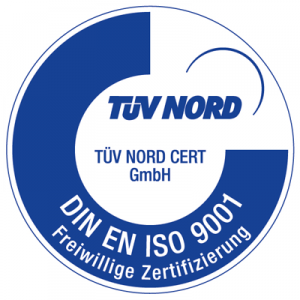EU Regulation on Machinery Products instead of Machinery Directive 2006/42/EC
2021-05-06 So now the time has come. The EU Commission has published a proposal for a Regulation of the European Parliament and of the Council on machinery products on 21.04.2021. In the future, there will be an EU Regulation on Machinery Products instead of a Machinery Directive.
New in the future EU Regulation on Machinery Products
In the draft of the future regulation on machinery (Proposal for a Regulation of the European Parliament and of the Council on machinery products) there are some innovations compared to the current Machinery Directive. New, for example:
- Annex I lists machines with high risk.
- Machines with high risk potential, Annex I, are subject to special conformity assessment procedures, for example also involving a notified body.
- The Commission can adapt the list of machines with high risk in Annex I according to technical progress, state of knowledge and new scientific findings, i.e. add or delete machines.
- The list of high risk machines shall be in full compliance with the new regulation on artificial intelligence – in terms of its safe integration of this artificial intelligence system into the overall machine.
- Digital documentation is allowed. At the same time, end users can request a printed version of the instruction manual free of charge at the time of purchase.
- The term “substantial change” now appears in the regulation and is defined.
- The definitions in the draft EU Regulation on Machinery Products now also include, for example, an “artificial intelligence system.”
- The revised Machinery Directive is aligned with the New Legislative Framework (NLF, 768/2008/EC) and becomes a regulation.
- Commission decisions on measures taken by member states for products placed on the EU market will now only be required if other member states do not agree with such a measure.
Other planned measures
- The Commission issues a new standardization mandate on all new and/or revised safety requirements.
- The Commission is preparing a guidance document for detailed clarifications.
Aim and purpose
The general objectives of the Machinery Directive are to remain in the Regulation on Machinery Products.
Specific objectives of the revision are to take into account Artificial Intelligence AI (The European Commission has launched a horizontal legal act for AI) and risks of new technologies. Legal clarity on scope and definitions is to be increased, simplifications are to be made through digital documentation and alignment with the NLF. And initial alignment of the list of high-risk machinery is to be achieved.
What remains of the MRL
The EU emphasizes: The consequence of the change from a directive to a regulation is not a change in the regulatory approach. The characteristics of the New Approach remain.
This means, for example, for manufacturers: flexibility remains in the choice of means to meet the essential requirements (harmonized standards or other technical specifications) and in the choice of the procedure to attest conformity among the available conformity assessment procedures.
Necessary adaptation: Regulation on Machinery Products instead of Machinery Directive
The current MRL Machinery Directive 2006/42/EC was not adapted to the New Legislative Framework (NLF) in 2014. (Note on the concept of the NLF: The EU institutions define safety and health requirements for products in directives and regulations. The technical content of these requirements is defined in standards that are harmonized throughout Europe).
As a result, the Machinery Directive does not provide a consistent and Europe-wide legal framework. The lack of clarifications and definitions leads to legal uncertainties and the uneven interpretation of the Machinery Directive in the member states. The “Guide to the Application of the Machinery Directive 2006/42/EC” is informative, but has no legal character. In addition, there are the challenges of digitalization, see also a message from the Federal Ministry of Labor and Social Affairs, Feb. 17, 2021, Sicherheit von Maschinen und Technologien aktiv mitgestalten (actively shaping the safety of machines and technologies).
The costs
Two aspects immediately catch the eye.
- Perhaps manufacturers can save costs by allowing digital instructions and digital declarations of conformity. On the other hand, costs can be expected for servers to manage the digital instruction and declaration of conformity.
- There may be costs for engaging third parties for conformity assessment of high-risk machines.
CO2 footprint
The EU is certain that the regulation will reduce the CO2 footprint. The reason is the reduced use of paper for printing operating instructions.
Final spurt
It is fairly certain that the proposed EU Regulation on Machinery Products will be applicable 30 months after it comes into force. That’s how long manufacturers, notified bodies and member states will have to adapt to the new requirements. Transitional provisions will apply to manufactured products and the certificates issued by notified bodies. Presumably, manufacturers will be allowed to make their machinery placed on the market under Directive 2006/42/EC available for another 42 months after the EU Regulation on Machinery Products comes into force. The same applies to valid type examination certificates.
Outlook
Directive 2006/42/EC will be repealed and replaced by the EU’s proposed regulation. It is not yet clear when the proposed EU Regulation on Machinery Products will come into force. So manufacturers and other economic players have some time to make adjustments. It will be exciting to see if there are any further changes before the new regulation comes into force. Our engineers are staying on the ball. Please do not hesitate to ask us.


